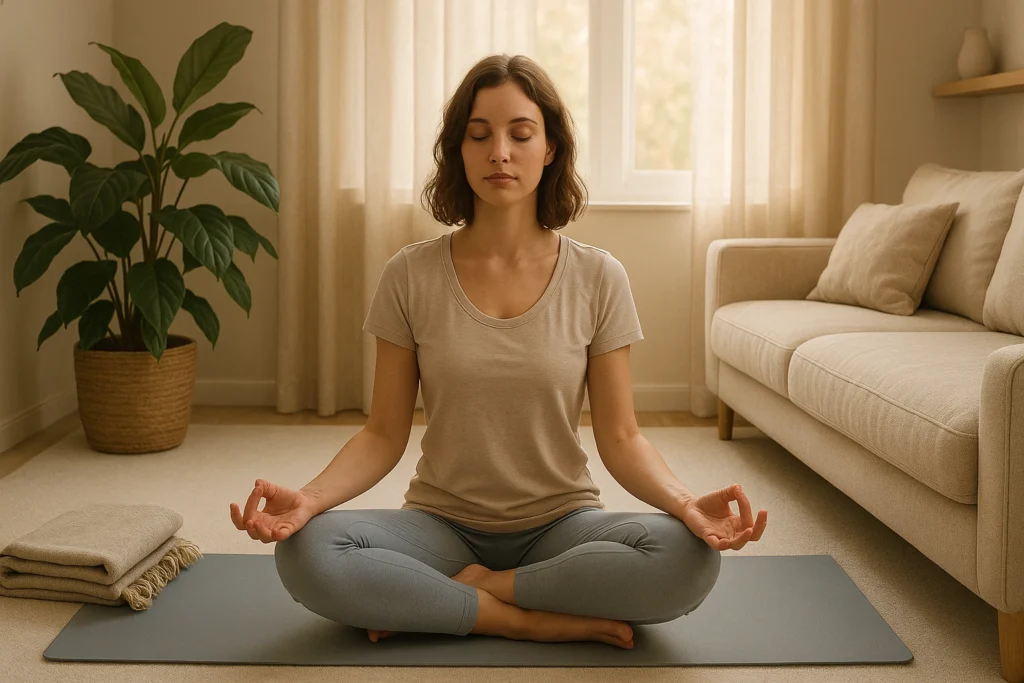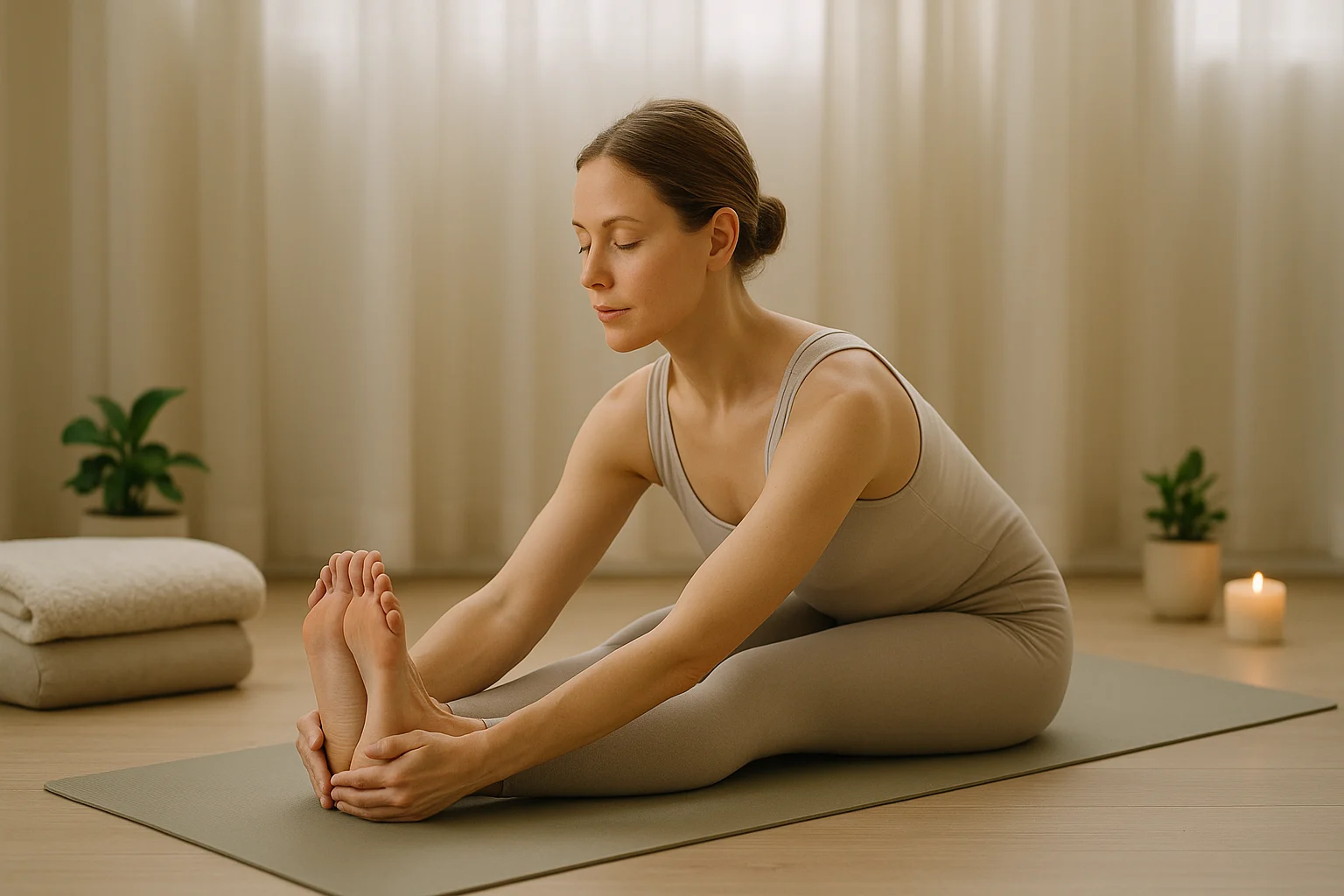
Even 10 mindful minutes of yoga may help ease back discomfort. For daily aches—lower back, a stiff neck, or creaky hips—yoga for pain relief offers a gentle, whole-body approach. Instead of quick band-aids, yoga blends movement, breathwork, and awareness. Personally, it felt more sustainable alongside my healthcare plan.
This guide is here to help you use yoga as a supportive ally when pain shows up. Whether you’re just dipping your toes into yoga or you’re already familiar with the mat, you’ll discover simple poses, practical tips, and easy routines—crafted to help you move more freely and find comfort in your body.
Start Your Pain Relief JourneyTable of Contents
Key Benefits of Yoga for Pain Relief
- Holistic Support: Gentle yoga can build strength and flexibility and may help with posture—while the slower pace and breath tend to ease stress.
- Body Awareness: Move with intention and steer clear of pain. Soft, adjusted movements make relief feel safer.
- Mind-Body Connection: Yoga addresses pain both physically (easing tension) and mentally (soothing your nervous system), helping you relate differently to discomfort.
- Accessible for All: Yoga works for any fitness level, with props like blankets or chairs making poses comfy and safe.
- Consistency Matters: Short, steady sessions most days often help more than occasional intense ones.
This post has affiliate links. We may earn a commission. Learn more.
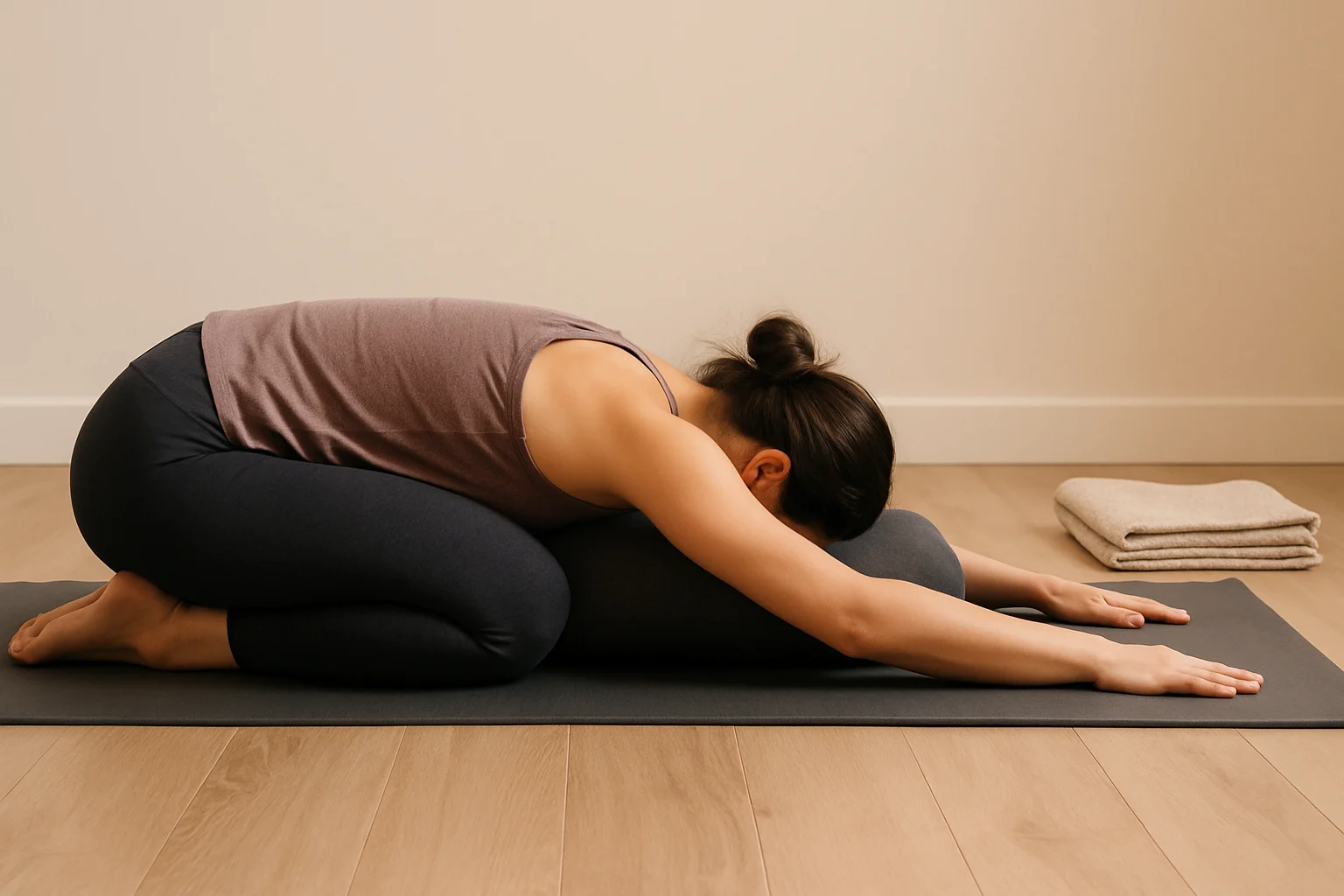
How Yoga for Pain Relief Works: The Science
Yoga combines gentle movement, steady breathing, and mindfulness to release tension, soothe the nervous system, and support relief that may last longer over time. Here’s the simple idea behind it:
Boosted Flexibility
Stiff muscles can tug on joints and sensitize nerves. Gentle stretching may help release tension and restore easier movement.
Enhanced Strength
An under-supported core can contribute to back or hip discomfort. Yoga can build balanced strength to support daily movement.
Better Posture
Slouching at a desk or hunching over your phone can trigger neck and back pain. Yoga helps you align your body, releasing built-up tension.
Reduced Inflammation
Chronic inflammation can underlie conditions such as arthritis. Some studies suggest yoga may nudge certain inflammatory markers in a helpful direction, though results vary from person to person.
Calmed Nervous System
Slow, deeper breaths can invite the “rest and digest” response—often softening tight spots.
Mindfulness for Pain Management
Yoga encourages present-moment awareness and steady breathing to help you relate differently to pain.
Fibromyalgia and Migraines
For fibromyalgia, yoga may support better sleep and lower stress. With migraines, simple neck mobility and relaxation practices may ease tension for some folks.
Yoga for Joint Pain
Joint pain—whether from arthritis or overuse—can make movement feel tough. A 2019 publication in the Journal of Rheumatology reported less stiffness among some participants who practiced yoga. Poses like Bridge and Reclined Bound Angle gently mobilize joints for comfort. I’ve used these to ease hip stiffness after long days.
Chronic Pain Yoga
Chronic pain can disrupt daily life, and gentle yoga practice may offer supportive relief. Some research reports reductions in pain among people with fibromyalgia who practice yoga. Poses like Child’s Pose and mindful breathing help calm the nervous system. Short daily sessions have helped my sciatica; your experience may vary. Explore our sciatica guide for targeted relief.
Pain relief poses are most effective when practiced with patience and breath awareness.
Core Principles for Safe Yoga Practice
Before you get going, a few friendly guidelines can help you stay comfortable and safe:
Listen to Your Body
Your body’s signals are your guide:
- Good vs. Bad Pain: A gentle stretch is okay; sharp or rising pain is your cue to ease out.
- Ease Off: Try not to force positions—modify or skip and come back later if needed.
- Respect Limits: Give yourself room for good-days and off-days; adjust to how flexible you feel today.
Start Slowly
Start gently—especially when things are sore:
- Basic Poses: Keep to simple, familiar movements and skip the fancy stuff for now.
- Breath Focus: A few slower, deeper breaths can help your muscles let go.
- Short Sessions: Try 5–10 minutes most days; add a little when your body feels ready.
Breathe Deeply
Your breath is a handy tool for managing pain:
- Calms Nerves: Slowing the breath often takes the edge off stress.
- Supports Recovery: Relaxed breathing and steady circulation may help your body recover.
- Focus Aid: Belly breathing can help you stay with the moment.
Practice Consistently
Showing up regularly helps:
- Daily Habit: A few minutes on most days is plenty.
- Patience: Relief tends to build over time.
Seek Expert Advice
A little personal guidance can keep things safe:
- Instructors: Look for teachers who’ve worked with pain management.
- Healthcare Pros: Check in with your clinician for advice tailored to your condition.
Interactive Body Pain Selector
Pick a body part to find yoga poses that can melt your pain away! 💡 Tip: Hone in on the spot that’s giving you the most grief for the best results.
Discover Your Yoga Solution
Click a body part to get personalized yoga recommendations:
Pick a body part to discover yoga poses that can ease your pain! 💡 Tip: Focus on the area that bothers you most for the best advice.

Targeted Yoga Poses
Explore a few simple shapes for common sore spots—always keeping comfort first.
Yoga for Lower Back Pain Relief
Lower back pain often stems from poor posture or weak muscles. Try these poses, then explore our lower back pain guide.
Gentle Poses
- Cat-Cow Pose: On hands and knees, inhale to lift chest and tailbone (Cow), exhale to round spine (Cat). Warms spine. Use a blanket under knees.
- Child’s Pose: Sit back on heels, fold forward. Stretches lower back, calms nerves. Support hips with a pillow.
- Downward-Facing Dog: From hands and knees, lift hips to form an inverted V. Stretches hamstrings, eases back tension. Use blocks under hands.
Targeted Poses
- Sphinx Pose: Lie on belly, lift chest with forearms on floor. Strengthens back. Ease off if pinching occurs.
- Supine Spinal Twist: Lie on back, drop one knee across body. Mobilizes spine. Support knee with a pillow.
- Cobra Pose: Lie on belly, press palms to lift chest slightly. Strengthens spine, opens chest.
- Locust Pose: Lie on belly, lift chest and legs slightly. Strengthens back muscles. Use a bolster under hips.
Pain relief poses are most effective when practiced with patience and breath awareness.
Yoga for Hip Pain Relief
Hip pain often comes from tight flexors. Learn more in our piriformis syndrome relief.
Gentle Poses
- Reclined Bound Angle: Lie on back, soles together, knees out. Opens hips. Support knees with blocks.
- Pigeon Prep: Bring one knee forward, extend other leg back. Stretches glutes. Use a blanket under hip.
Targeted Poses
- Eye of the Needle: Lie on back, cross ankle over knee, pull thigh toward chest. Stretches outer hip. Use a strap.
- Low Lunge: Step one foot forward, lower back knee. Stretches hip flexors. Support with blocks.
- Lizard Pose: Step one foot forward, lower hips, hands inside foot. Deepens hip stretch.
- Happy Baby Pose: Lie on back, hold feet, knees to armpits. Opens hips gently. Use a strap.
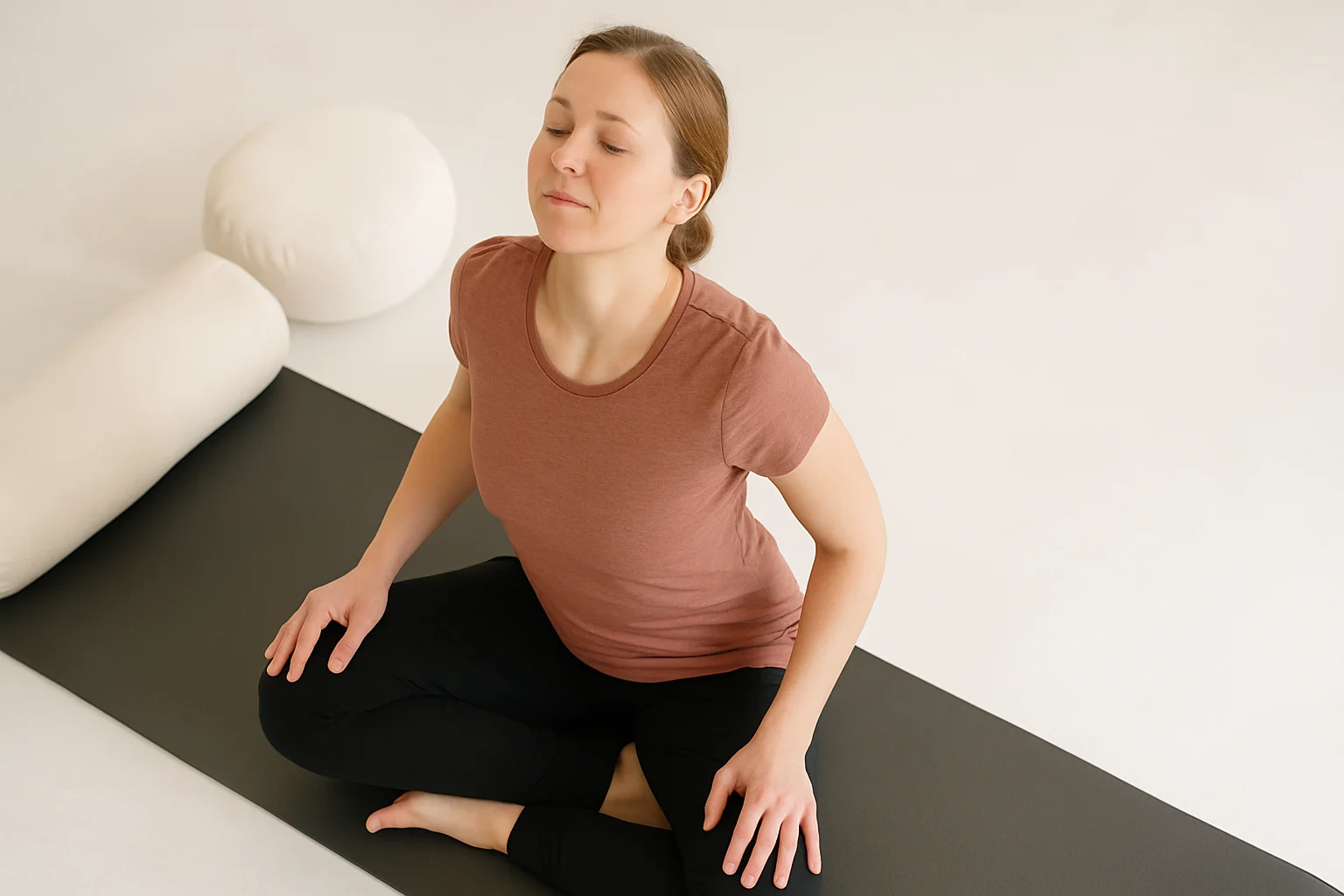
Neck and Shoulder Tension Relief
Gentle poses here aim to release tension and invite easier alignment.
Gentle Poses
- Neck Rolls: Drop ear to shoulder, hold, then switch. Releases tension. Keep movements small.
- Shoulder Rolls: Roll shoulders up, back, down. Improves circulation.
Targeted Poses
- Thread the Needle: Slide one arm under body, rest shoulder on floor. Stretches upper back. Use a blanket.
- Eagle Arms: Cross arms, lift elbows. Stretches shoulders. Grab opposite shoulders if needed.
- Puppy Pose: From hands and knees, walk hands forward, lower chest. Stretches shoulders.
- Seated Twist: Sit, twist torso gently, hand on opposite knee. Releases upper back tension. Use a chair.
Yoga for Wrist and Hand Pain Relief
Repetitive tasks can contribute to wrist discomfort. See our carpal tunnel guide.
Gentle Poses
- Wrist Stretches: Extend arm, press fingers down, then up. Enhances circulation. Stretch gently.
- Finger Spreads: Spread fingers wide, then clench. Improves dexterity.
Targeted Poses
- Prayer Pose: Press palms together, fingers up, then down. Stretches wrists. Use fingertips if needed.
- Desk Stretches: Place hands on desk, fingers toward body, lean in. Deepens wrist stretch.
- Wrist Circles: Rotate wrists in circles while extending arms. Relieves tension.
- Reverse Prayer: Press palms together behind back, fingers pointing up. Stretches wrists. Use a strap.
Knee Pain Management with Yoga
Yoga can strengthen the muscles around your knees, which may support alignment without adding strain.
Gentle Poses
- Leg Raises: Lie on back, lift one leg slightly. Strengthens quads. Keep lift small.
- Modified Chair Pose: Bend knees as if sitting, hover above chair. Strengthens legs. Hold wall for balance.
Targeted Poses
- Bridge Pose: Lift hips from back, feet flat. Strengthens glutes. Use a block between thighs.
- Staff Pose: Sit with legs extended (or knees slightly bent if needed). Strengthens quads. Support knees with a blanket.
- Warrior I: Step one foot forward, bend knee, back foot angled. Strengthens legs, stabilizes knees. Hold wall for balance.
- Reclined Hand-to-Big-Toe Pose: Lie on back, lift one leg with strap. Stretches hamstrings, supports knees.
General Stress and Tension Relief
Stress amplifies pain. Try our chair yoga guide for gentle relaxation.
Restorative Poses
- Savasana: Lie on back, relax fully. Calms nerves. Support knees with a blanket.
- Legs-Up-The-Wall: Lie on back, legs up against wall. May help with swelling for some people. Use a pillow under hips.
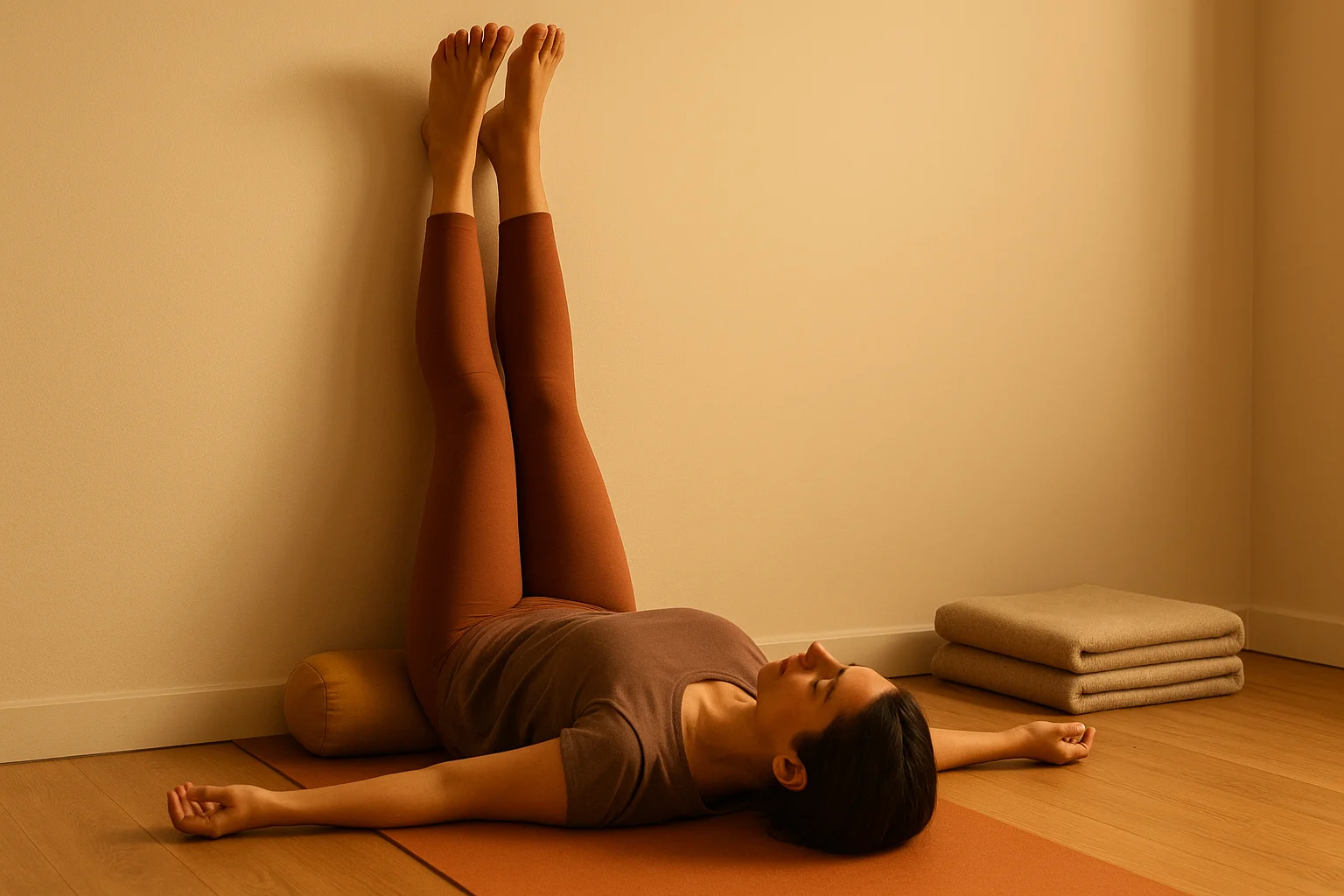
Who Benefits from Therapeutic Yoga?
Yoga for Office Workers
Desk jobs cause neck and back pain from “tech neck.” Gentle mobility work, like Shoulder Rolls, counters tension. Try our wrist pain guide for typing relief.
Yoga for Seniors
Seniors may benefit from chronic pain yoga with gentle poses. Chair-based moves can ease joint stiffness safely. Explore our senior back pain guide.
Yoga for Chronic Conditions
Chronic issues like sciatica, arthritis, and fibromyalgia may respond well to restorative yoga sequences.
Using Props in Yoga for Pain Relief
Props make yoga pain management more accessible, especially for beginners or those with limited mobility. I’ve used a rolled-up towel under my hips in Child’s Pose to ease my lower back, and it made a noticeable difference. Blocks, straps, and blankets can take pressure off your joints and help you settle into stretches more comfortably.
Common Mistakes to Avoid
A gentle, therapeutic approach can help, but a few common missteps can slow progress or stir up discomfort. Here are a few to watch for:
- ✅ Forcing Poses: Pushing into pain—like overextending in Cobra—can make things worse. When my back spoke up, easing off and using props made all the difference.
- ✅ Ignoring Breath: Holding your breath (even in Child’s Pose) can cut off the calm. Keep the breath slow and steady to help the body soften.
- ✅ Skipping Warm-Ups: Jumping straight into deep stretches without a few Cat-Cow rounds can strain muscles. Warm up gently first.
- ✅ Inconsistent Practice: Sporadic sessions make it hard to feel progress. My hips felt better with short daily sessions—try 10 minutes. See our beginner guide for tips.
Building Your Yoga Routine
Consistency is helpful for yoga pain management. Here are three modern routines:
15–30-Minute Routine
| Time | Activity | Focus | Pain Area |
|---|---|---|---|
| 0–5 min | Cat-Cow, Neck/Shoulder Rolls, Belly Breathing | Spinal mobility, calming | General, Back |
| 5–15 min | 2–3 Poses (e.g., Eye of the Needle, Sphinx) | Targeted relief | Specific areas |
| 15–20 min | Supine Twist, Child’s Pose | Tension release | General |
| 20–30 min | Savasana or Legs-Up-The-Wall | Deep relaxation | Nervous System |
10-Minute Beginner Routine
New to yoga pain management? Try Child’s Pose (3 min), Cat-Cow (3 min), and Savasana (4 min). These mindful movements eased my neck tension gently. It’s beginner-friendly.
Quick 5-Minute Routine
For busy days, try Cat-Cow (2 min), Child’s Pose (2 min), and deep breathing (1 min).
Tips: Start with 10 minutes daily, adjust based on your needs, and be patient. Incorporate wrist stretches during breaks.
Frequently Asked Questions
When to Consult a Professional
Yoga for pain relief complements medical care. See a doctor if you notice:
- Sudden, severe pain.
- Pain that worsens with yoga.
- Numbness, tingling, or weakness.
- Persistent pain despite yoga.
- Unexplained weight loss or fever.
- Loss of bowel or bladder control.
A healthcare professional can customize yoga to fit your specific condition.
Embrace Therapeutic Yoga for a Pain-Free Life
Chronic pain doesn’t have to call all the shots. With yoga, you can support your body’s natural capacity to adapt and recover at your own pace. Move with care, breathe deeply, and give yourself the gift of consistency—relief is possible, one breath and one pose at a time.


